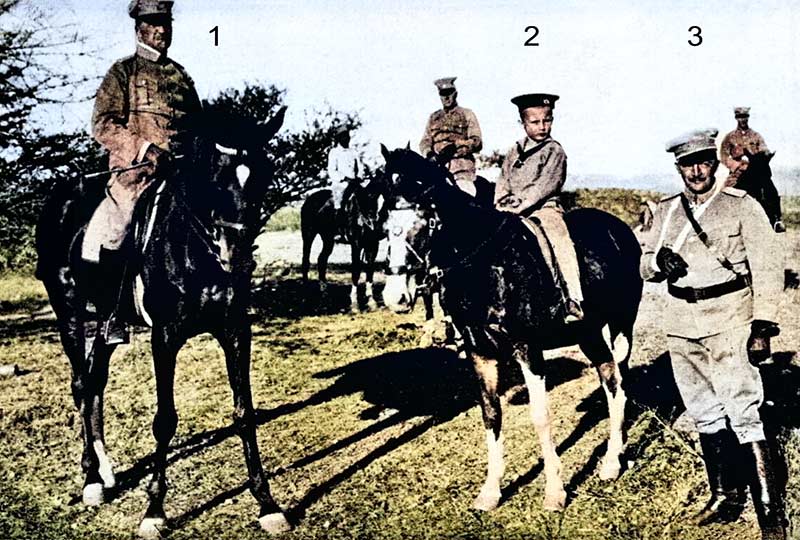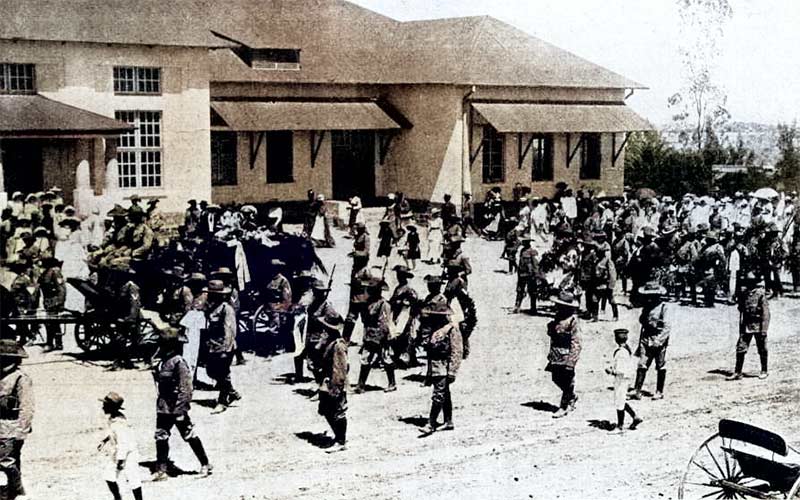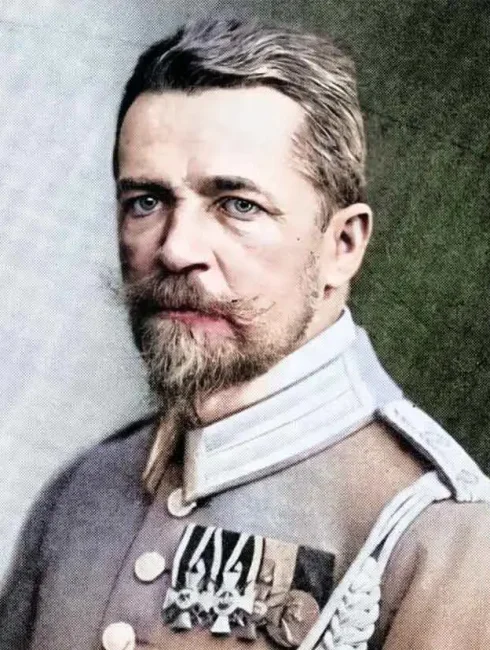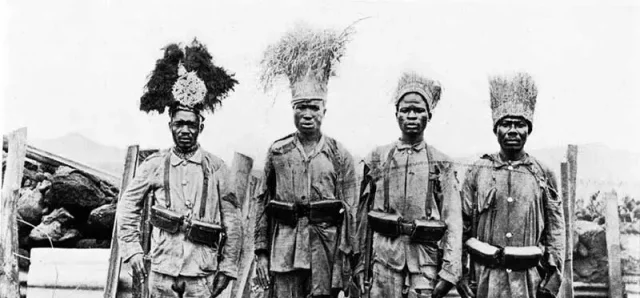- Military History
- Biographies
- Militarians Biographies
- Joachim Friedrich von Heydebreck
Joachim Friedrich von Heydebreck
Prussian Lieutenant Colonel and Commander of the Schutztruppe in German South West Africa
Joachim von Heydebreck was born on October 6, 1861 in Schwedt as the son of Lieutenant General Hennig von Heydebreck (1828-1904) and his wife, Anna von Colmar (1837-1879). He attended the Royal Pedagogy in Putbus and entered military service at nineteen.
In the 2nd Guards Field Artillery Regiment, he was appointed a Lieutenant on February 12, 1884, premier lieutenant on October 18, 1891 and transferred to Infantry Regiment No. 114 in 1893. Because of a personnel transport of the Imperial Protection Force to German South West Africa, which Heydebreck had to lead and who arrived in Swakopmund on March 26, 1896 on the steamer Gertrud Woermann, he liked the idea of also serving in the German colony.
Returned to Germany, he said goodbye, joined the Schutztruppe as a Prime Lieutenant on July 27th, 1896 and left Hamburg on July 31st, 1896 on the Woermann steamer 'Lothar Bohlen'. In German South West Africa, he served with the 1st Field Battery, took part as its leader in the battles against the Swartbooi in 1898 and was promoted to Captain on November 24th, 1898.
1899, he spent a home holiday in Germany, from which he traveled back to Swakopmund from Hamburg on the steamer 'Melita Bohlen' on January 26th, 1900. In November 1903, the 42-year-old took part in the suppression of the Bondelswarts uprising with his mountain battery, under the leadership of the Deputy Commander of the southern department, Captain von Fiedler. Heydebreck took part in the campaign and the battles in the Herero uprising of 1904-1906 until he was assigned to the Staff of the Governor of German South West Africa.
In 1907, he married the widowed Ruth Selle in Berlin. The daughter of a Royal Prussian Major followed him with her almost four-year-old son (from her first marriage) to Windhoek.
On June 15th, 1907, Heydebreck was promoted to the rank of a Major and was made an honorary knight of the Order of St. John of the Pomeranian Cooperative (in german: Ehrenritter des Johanniter-Ordens der Pommerschen Genossenschaft). In 1908, he was appointed Inspector of the State Police, set up the mounted state police with the help of three criminal investigators sent from Germany, and successfully introduced Egyptian camels as mounts for the so-called Camel Rider Companies.

In 1910, he moved back to the protection force. Major Bethe became his successor in the state police, and in 1911 he was appointed Deputy Commander of the protection force for German South West Africa and in 1912 its Commander. The officer had been a member of the first state council since 1910. In mid-March 1912, his wife fell ill with typhus and died on April 3, 1912 in Windhoek, where she was buried. She left behind Hans-Jürgen von Heydebreck-Selle, as Heydebreck's adopted son was now called. In the same year, he brought the nine-year-old to Germany so that a medical procedure that had become necessary could be carried out there.
Heydebreck traveled alone back to the German colony in the beginning of 1913 and was promoted to the rank of Lieutenant Colonel the same year. As an honorary knight of the Order of St. John, he suggested the construction of a hospital in Keetmanshoop, which the order financed. On August 7th, 1914, when the First World War had broken out in Europe, with the help of his only general staff officer, Captain Rüdiger Weck, he implemented the mobilization ordered by Governor Theodor Seitz and activated the reserves, the "Landsturm", to increase the protection force up to 5,000 men.
With the invasion of the South African Union troops into the German colony, Heydebreck experienced the first military successes of his protection force in the battle of Sandfontein on September 26th, 1914.
During a test shooting in Kalkfontein-South, where new rifle grenades were to be tested for use by troops on November 9th, 1914, Lieutenant Colonel Joachim von Heydebreck was critically injured in an unforeseen explosion, while a rider was killed immediately, the senior surgeon general Dr. Berg, a senior firefighter and two non-commissioned officers were seriously injured. Despite several emergency operations, Heydebreck could not be saved and died on November 12th, 1914, in Kalkfontein.
To the members of the Schutztruppen, he dictated a farewell letter. His body was transported by train to Windhoek and buried next to his wife in the Windhoek cemetery. His successor as Commander of the protection force was Victor Franke. Heydebrecks' death received a powerful response in the press and even the South African newspaper The African World, amid the war, found words of honor for the German officer and enemy.

Lieutenant Colonel Joachim von Heydebreck was the penultimate commander of the Imperial Protection Force for German South West Africa.
Joachim Friedrich von Heydebreck - Quick Facts
- Imperial German Army (1871-1919)
- Schutztruppe (1891-1918)
- Herero Wars (1904-1908)
- WWI (1914-1918)
- {{#owner}}
- {{#url}} {{#avatarSrc}}
{{name}} {{/url}} {{^url}} {{#avatar}} {{& avatar}} {{/avatar}} {{name}} {{/url}} - {{/owner}} {{#created}}
- {{created}} {{/created}}

























